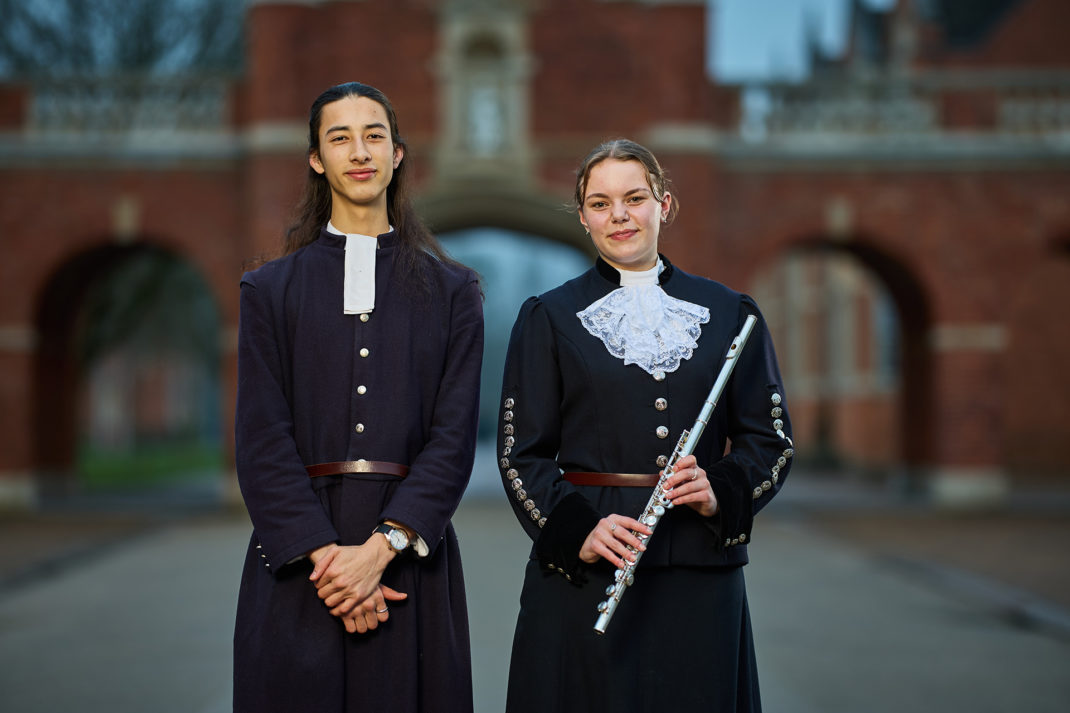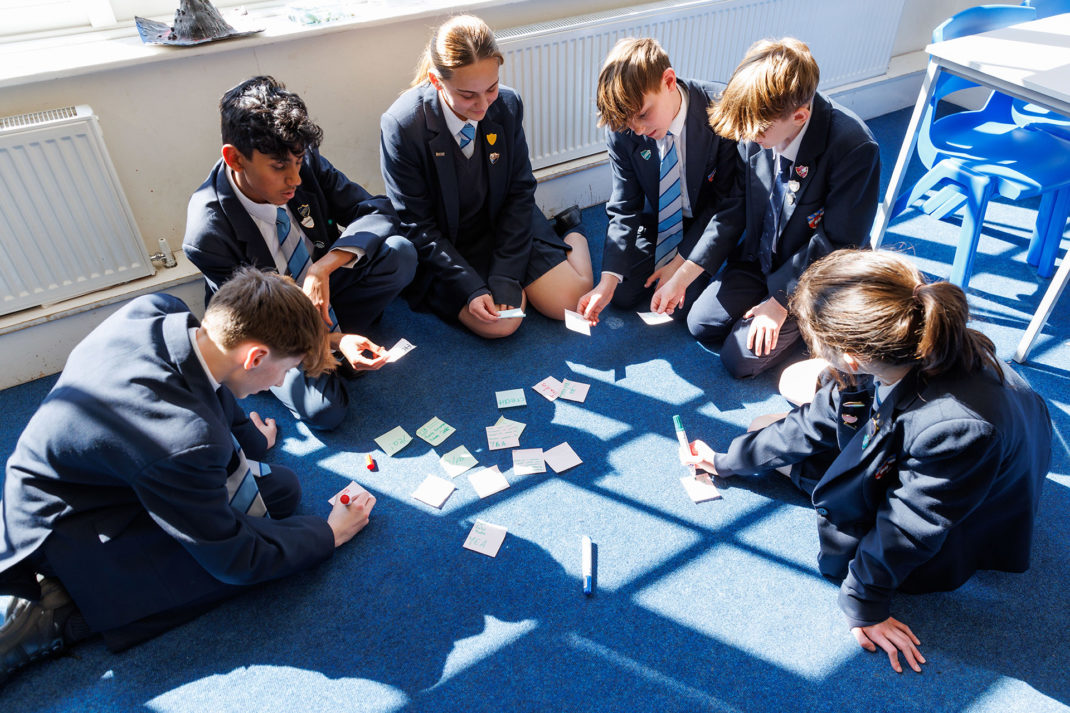What’s the Story Behind These School Uniforms?
By
8 years ago
From Tudor garb to red dungarees, school uniforms are more than just levellers, they are storytellers
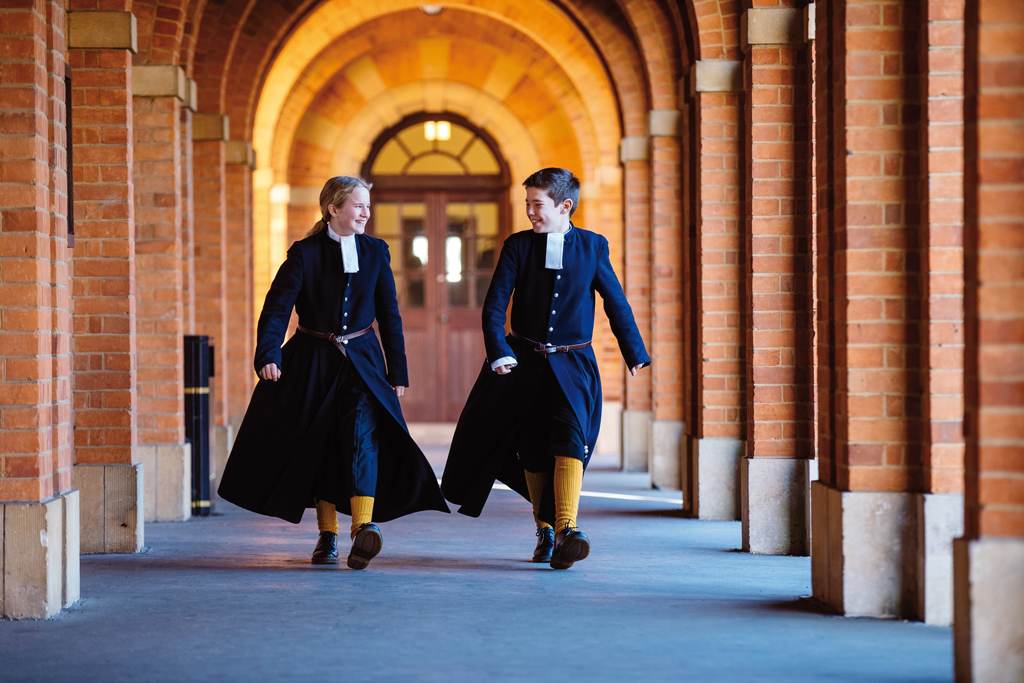
From full Tudor garb to red dungarees, school uniforms are more than just levellers, they are storytellers.
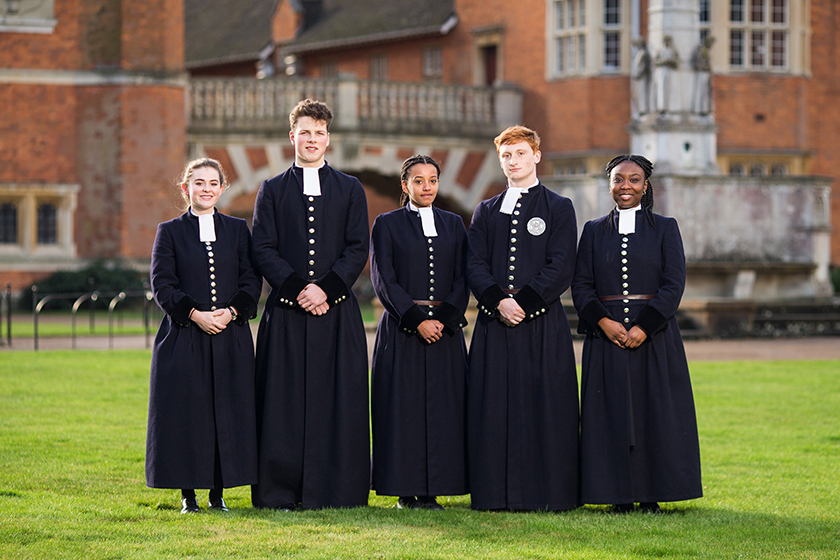
Christ’s Hospital
School uniforms can either loathed or loved by their wearer. Here are a selection of schools where the pupils feel the latter thanks to the history threaded through their uniforms.
Christ’s Hospital

Five years ago, 95 per cent of pupils voted to keep the 450-year-old uniform at Christ’s Hospital School. ‘Why should it change it?’ one pupil asked. ‘The uniform was pretty much the reason I wanted to come to Christ’s Hospital in the first place,’ commented another. They continued, ‘It illustrates the unique experience Christ’s Hospital has to offer.’
The Horsham school prides itself on maintaining traditions, namely its robust scholarship programme, and the instantly recognisable uniform has hardly been altered since the Tudor times. When the school was founded over four and half centuries ago, the City of London gathered up ‘fatherless and poor children’ and cared for them. Through the generosity of the citizens of London smart new clothes were provided for the children of Christ’s Hospital.
The early uniform was very colourful, in accordance with Tudor style. It’s thought that blue and yellow was chosen to distinguish the children from those attending other schools.
The buttons on the long bluer coat depict the head of the school’s founder, King Edward VI. They were introduced a little over 200 years ago. Large silver buttons and velvet cuffs are the mark of a Grecian (sixth-form pupil) who, in his or her final year, has demonstrated outstanding academic performance in more than one subject.
Today, the uniform consists of a long blue coat, belted at the waist, worn with matching knee breeches, yellow socks and white neck bands. The girls wear the same coat but with matching skirt. If there has been one element of variety, it has been in the individual’s choice of footwear and for many of the pupils at Christ’s Hospital, Dr. Martens have since 1987 been the perfect accompaniment to the Tudor uniform.
Knighton House
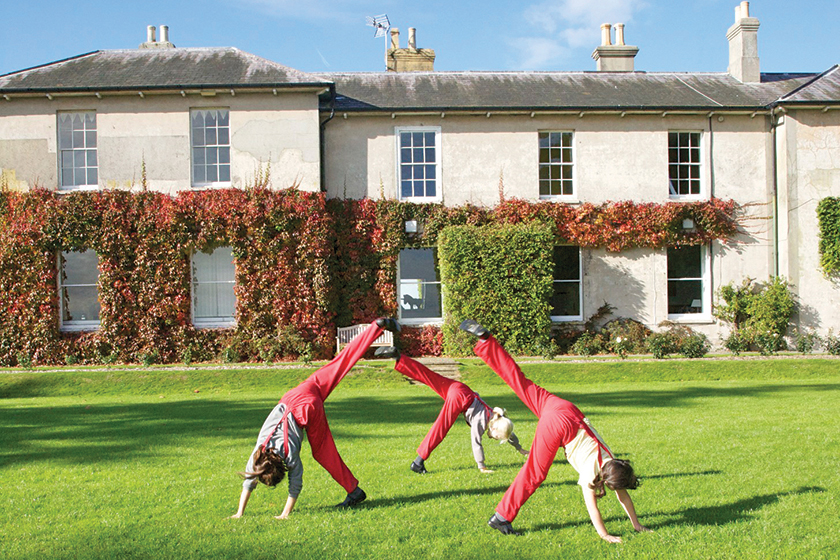
No one knows quite how the famous dungarees began at girls’ prep school Knighton House. One theory is that, with girls free to roam across 30 acres of lawns, paddocks and woods, visibility was a priority for founders John and Peggy Booker.
The dungarees are not only distinctive but very popular with the girls thanks to their practicality, comfort and informality. There is also a best uniform comprising a gingham shirt, red jumper and grey skirt, and at the weekends girls are free to wear whatever they like.
In Year 8 girls finally hang up their dungarees in favour of skirts and jumpers. But the red uniform is not consigned to the back of the wardrobe forever. It is the tradition for the whole school to sign the leavers’ dungarees. In fact, generations of Old Knightonians still treasure their signed dungarees.
‘Our distinctive and iconic uniform of red dungarees remain as striking today as when they were originally introduced in the 1950s,’ says headmistress Sarah Wicks. ‘It is a daily reminder of the school’s heritage and symbolises everything we would like Knighton children to be – vibrant, practical, resilient, standing out from the crowd and ready for the adventure of life. Yet they are so practical for girls who play outside. Especially for those who love climbing tress – a playtime activity that is encouraged here at Knighton. It means the girls sometimes get a bit mucky, but then, that’s the beauty of dungarees!
‘The girls are proud to wear the dungarees and are fiercely defensive of them. Woe betide any new head who tried to get rid of them! Uniform is a great leveller although I love to see the girls individualising them with their own buttons.’
Royal Hospital School

The Royal Hospital School, Suffolk has a unique naval ethos that is reflected in its school uniform. Founded in 1712 in Greenwich, London, to ‘improve navigation’ through education, the school prepared boys for a life at sea with many going on to become explorers and pioneers of their time. By the late 19th and early 20th centuries the school was known as ‘the cradle of the navy’.
In 1933 the school moved to a 200 acre site in Suffolk, overlooking the River Stour. The boys continued to be taught the skills of navigation and seamanship, and traditions were strongly upheld, including the naval uniform.
Until 1972, boys were required to wear a naval uniformed referred to as No8’s as every day dress as well as their No1s for special occasions. Both were issued and paid for by the school. The practice still exists today for No1’s, which Royal Hospital School pupils wear for divisions, alongside their standard day-to-day uniform.
For the majority of pupils, the No1’s comprise a blue serge naval jacket and trousers worn with a white shirt trimmed with blue braid and a sailor’s collar and a ‘gidge’ or sailors hat. School prefects or ‘chiefs’ (short for chief petty officers) wear a naval officer’s uniform with brass buttoned jacket and peaked cap. Those in the band and guard have the addition of a white belt and anklets.
While the uniform has changed over the ages the importance of the naval connection has remained. ‘Discovery, exploration and challenge have been the bedrock of our education for over 300 years and they continue to shape our ethos of today,’ explains head Simon Lockyer.
READ MORE: Boarding Prep Schools Back in Fashion / The Best British Schools for Sailing

